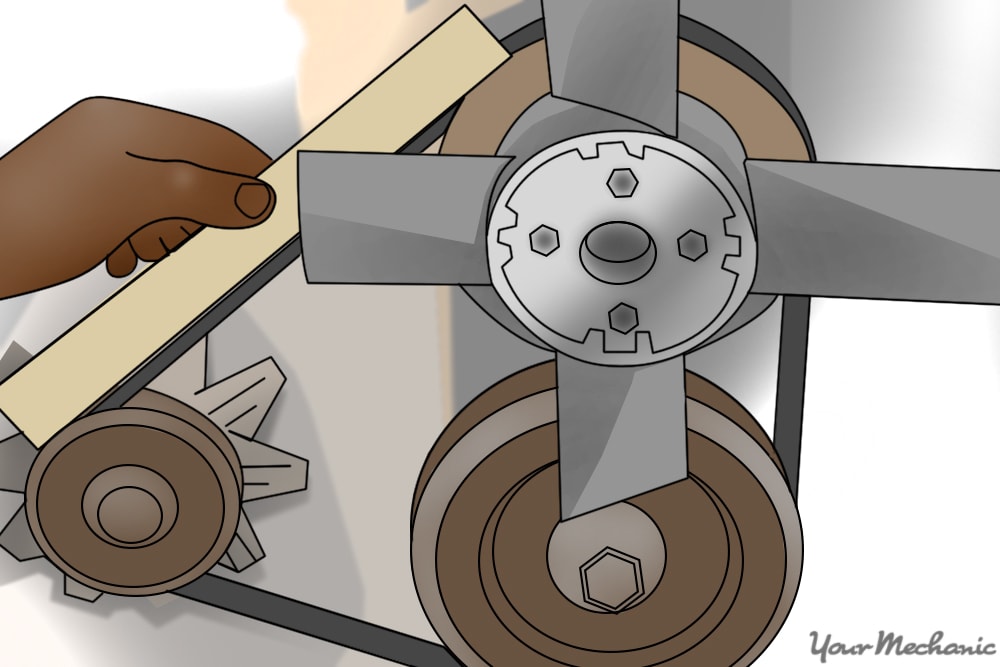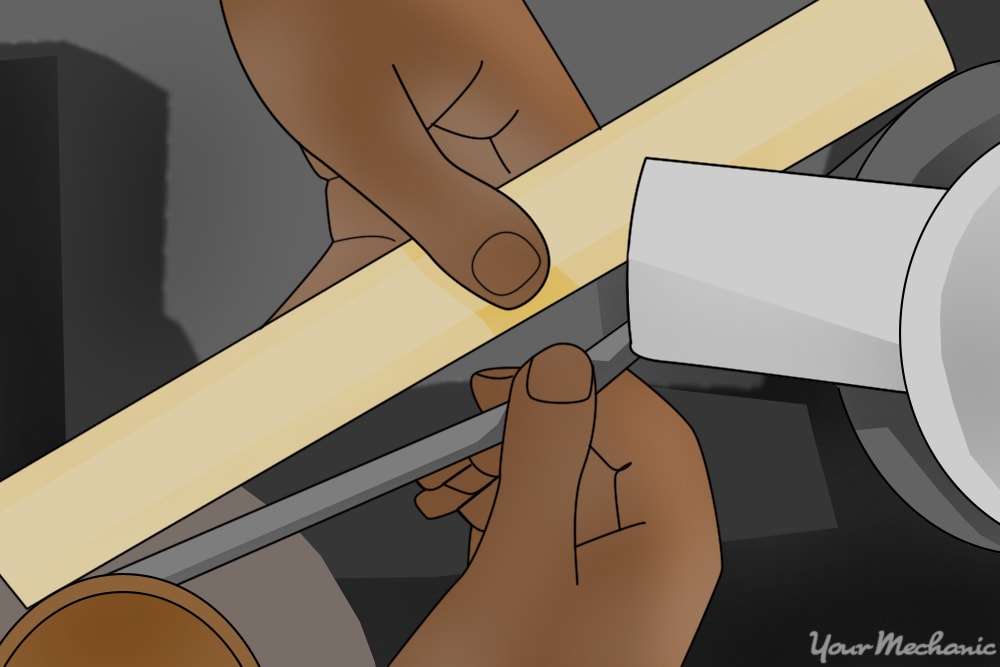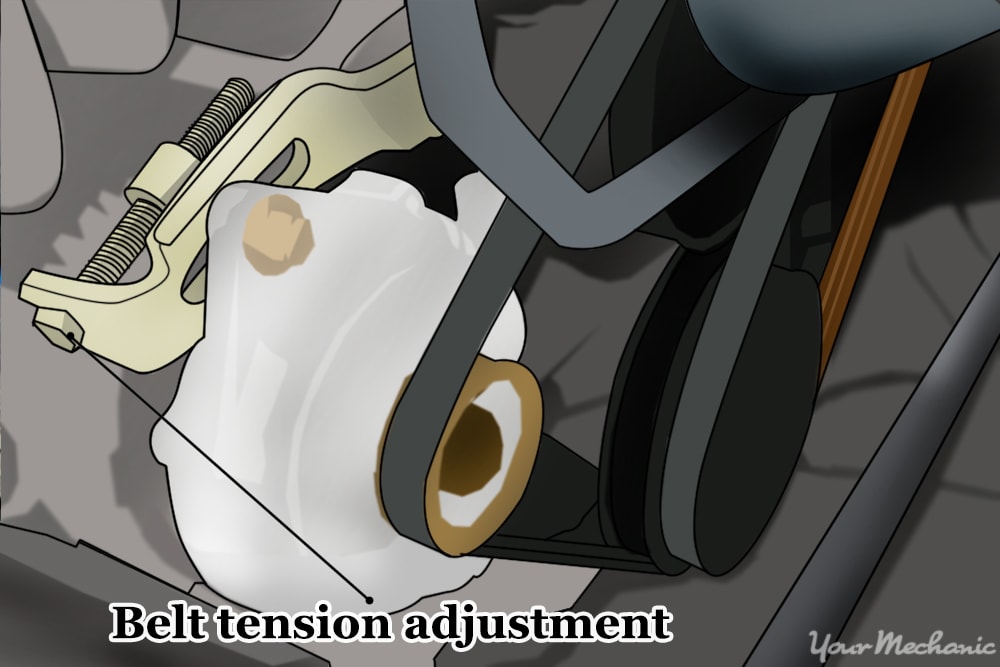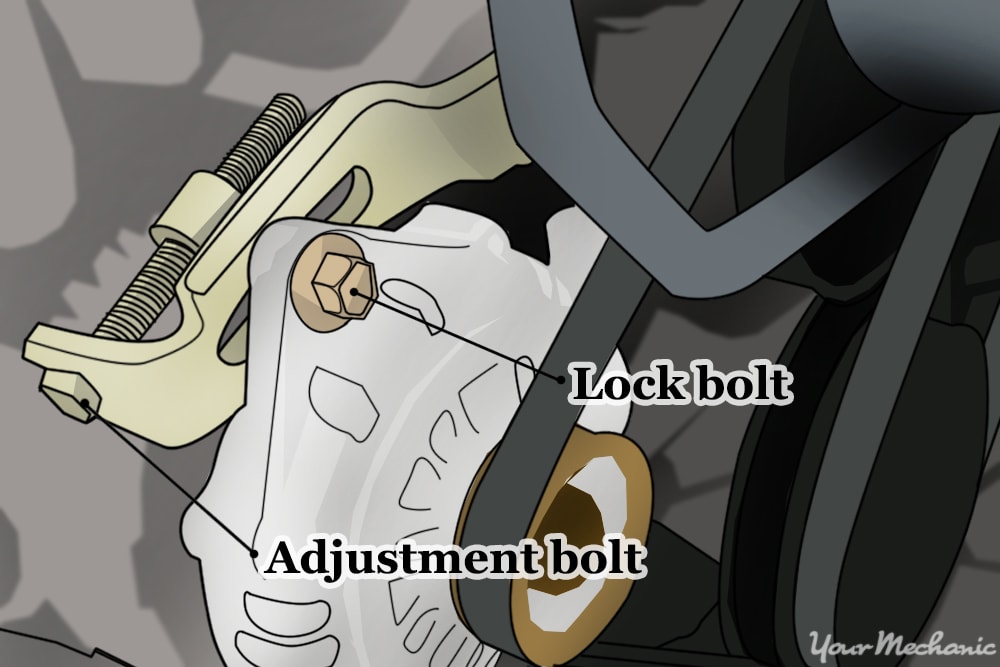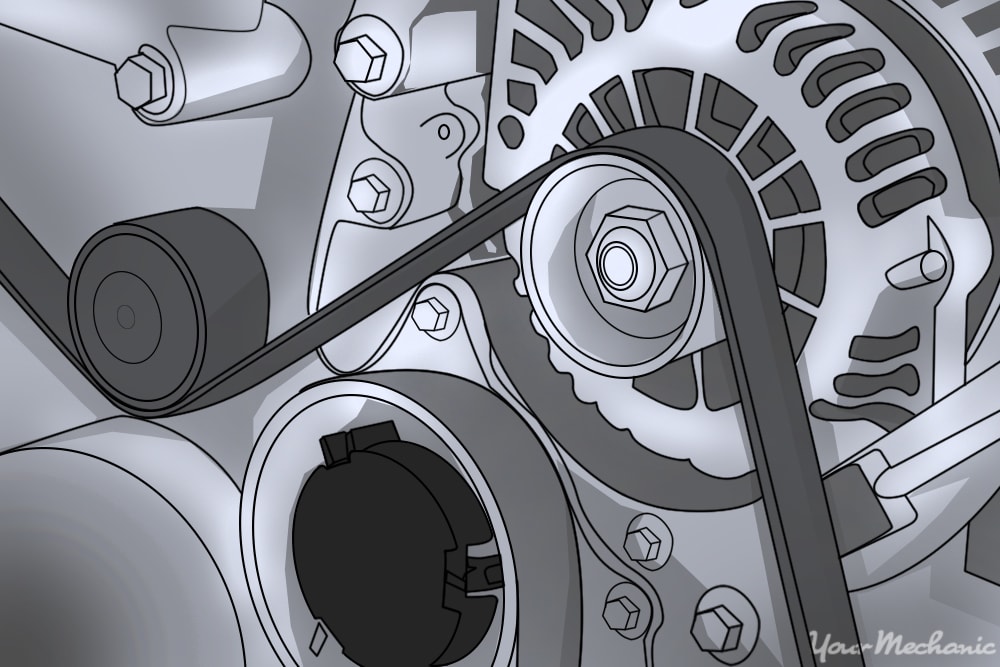

Modern vehicles rely heavily on the use of the drive belt. The drive belt powers the alternator, air condition, power steering, and in some cases, the water pump. Proper operation of the drive belt is important in maintenance of the vehicle.
As the drive belt ages, the stress from powering items such as the power steering pump and the alternator can cause the belt to stretch. When the belt stretches, it can begin to slip, if left unattended.
Not all types of drive belt systems can be adjusted. Cars equipped with an automatic belt tensioner adjust themselves over time and do not require adjustment.
This article shows you the process to adjust drive belts on a pivot-style belt adjuster.
- Warning: Drive belts that are cracked or excessively worn should be replaced. Only belts that are in good working order should be adjusted. To check the condition of your drive belt Signs Your Drive Belt is Worn.
Part 1 of 3: Check the drive belt tension
Materials required
Step 1: Locate the tension point. First, you need to locate the longest stretch of belt so that you get the most accurate results while checking the drive belt tension.
Using a measuring tape or a ruler, find the center point on the longest stretch of the drive belt.
Step 2: Check the belt tension. Now that you have found the center point on the belt to measure, you can check the belt’s tension.
Depress the belt with your finger and measure how much the belt is able to move. Most manufactures recommend between ½ inch and 1 inch of movement.
- Tip: Check the owner's manual for exact specifications for your vehicle.
Alternatively, you can check belt tension by twisting the belt; if it twists more than halfway over, the belt is too loose.
Part 2 of 3: Adjust the drive belt tension
Step 1: Loosen the adjustment points. The first step is to locate the drive belt pivot point bolt. This is usually found opposite the adjustment bolt mounted on the the alternator. The pivot bolt will be loosened just a bit. Do not remove the bolt all the way
Next, find the adjustment lock bolt and the adjuster bolt. Loosen the belt adjustment bolt.
Step 2: Adjust the drive belt tension. With both the drive belt pivot bolt and adjuster lock bolt loose, slowly tighten the adjustment bolt to achieve the desired tightness.
- Note: Tightening the adjustment bolt makes the belt tighter and loosening the bolt will make the belt looser.
Tighten the bolt at the amount of belt tension you want keeping in mind that the belt will get a little tighter when you lock everything down. If the alternator has trouble moving, use a flat head screwdriver to lift up gently on the alternator.
- Note: Take care to not break any parts of the alternator and do not pry off any plastic parts.
Part 3 of 3: Check the drive belt tension again and secure the alternator
Step 1: Tighten all the bolts. The first step is to tighten the drive belt adjuster lock. The bolt should be tight, but take care not to overtorque it.
Next, tighten the pivot point bolt. This will tighten the belt a bit more too.
Now that everything is tight, check your work any make sure that everything is secure.
Step 2: Check the belt tension. With everything tight, check the belt tension using a measuring tape or a ruler. The belt should not twist more than half of the way over and should have the recommended amount of depression.
Finally, start the engine and make sure the belt does not squeal or make any unusual noises.
Adjusting your car’s drive belt is a part of vehicle maintenance during regular service intervals. Having a properly adjusted belt not only helps the belt last longer but also eliminates and squeaky noises that may have been present before.
If at any point you are uncomfortable about performing this maintenance yourself or if you feel the drive belt needs to be replaced, contact the qualified technicians at YourMechanic for help.


